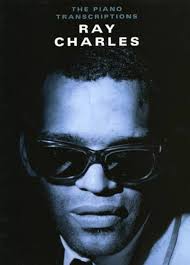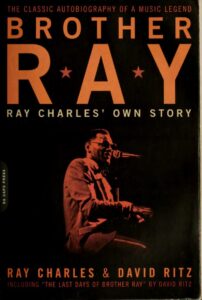Come join us now, and enjoy playing your beloved music and browse through great scores of every level and styles!
Can’t find the songbook you’re looking for? Please, email us at: sheetmusiclibrarypdf@gmail.com We’d like to help you!
Table of Contents
Remembering Ray Charles, born on this day in 1930 (1930-2004).

Ray Charles – Georgia On My Mind (Live)
Best Sheet Music download from our Library.

Please, subscribe to our Library.
If you are already a subscriber, please, check our NEW SCORES’ page every month for new sheet music. THANK YOU!
Ray Charles: The Genius Who Rewrote American Music

Browse in the Library:
Or browse in the categories menus & download the Library Catalog PDF:
Few figures in the history of American music can claim the breadth of influence and enduring legacy of Ray Charles Robinson, better known simply as Ray Charles. Born on September 23, 1930, in Albany, Georgia, Charles transformed the musical landscape by breaking down boundaries between genres—gospel, blues, jazz, country, and pop—and blending them into something new, vibrant, and deeply human. Known to fans and musicians alike as The Genius, Charles was more than a singer, pianist, and songwriter; he was a cultural force who helped shape modern music and set new standards of artistic authenticity.
Early Life and Struggles
Ray Charles’ story begins with hardship. Raised in Greenville, Florida, in extreme poverty, Charles experienced loss and adversity from a young age. His father abandoned the family, and his younger brother George drowned in a tragic accident when Ray was five. Around the same time, Charles began losing his eyesight due to juvenile glaucoma, and by age seven he was completely blind.
Rather than pity him, his mother, Aretha, insisted that Ray learn independence. She sent him to the Florida School for the Deaf and the Blind in St. Augustine, where he studied classical piano, Braille music notation, and orchestration. Charles was exposed to Bach, Beethoven, and Mozart alongside the gospel, blues, and country music he heard back home. This unique duality—formal training combined with grassroots tradition—would shape his musical vocabulary.
When his mother died in 1945, Ray was only 15. Alone, blind, and poor, he began traveling as a working musician, first across Florida and then to Seattle. There, he adopted the smoother vocal style of Nat King Cole and Charles Brown while also honing his piano skills in small clubs. By the early 1950s, he had developed a personal style—gritty, gospel-infused, and emotionally raw—that would change the course of American music.
Musical Style and Innovation
Gospel Meets Rhythm and Blues
Ray Charles’ genius lay in his ability to translate sacred music into secular expression. He applied the emotional fervor, call-and-response patterns, and chord progressions of gospel to lyrics about love, desire, and everyday struggles. His 1954 hit I Got a Woman is often cited as the first true soul song. To some listeners it was scandalous—“church music” being used to celebrate romantic love—but to most, it was electrifying, a new sound that spoke directly to the heart.
Soul Pioneer
In the late 1950s and early 1960s, Charles refined this fusion into a fully formed genre: soul music. His voice, marked by gravelly intensity and unmistakable phrasing, could move from anguish to joy in a single phrase. Songs like What’d I Say (1959) combined blues structure with gospel-style intensity, topped with infectious piano riffs and audience-participation breakdowns. This track, partly improvised onstage, became not just a hit but a blueprint for both soul and early rock ’n’ roll.
Jazz and Big Band Tradition
Though he is most associated with soul and R&B, Charles was a jazz musician at heart. He admired Art Tatum, Duke Ellington, and Count Basie, and his piano playing reflected their influence. His album Genius + Soul = Jazz (1961), recorded with the Count Basie Orchestra, demonstrated his command of jazz harmony and big-band arranging. His solos often mixed blues riffs with jazz chord voicings, showing his comfort in multiple musical worlds.
Crossing Genres and Defying Labels
Ray Charles refused to be boxed in. At a time when the American music industry rigidly separated genres by race and class—“race records” for Black audiences, country and pop for white—Charles ignored such barriers. His landmark album Modern Sounds in Country and Western Music (1962) shocked the industry by reinterpreting country standards with lush orchestral arrangements and soulful vocals. Songs like I Can’t Stop Loving You became crossover hits, appealing to both Black and white audiences during a time of deep racial segregation. Charles proved that good music transcends boundaries, paving the way for future genre-defying artists.
Harmonic Language and Musical Techniques
Blues Foundation
Much of Charles’ harmonic approach was rooted in the 12-bar blues structure. He relied heavily on dominant seventh chords, blue notes, and walking bass lines. His piano style often emphasized syncopation, creating a driving rhythmic feel that energized his band and audience alike.
Gospel Harmony
Charles borrowed the harmonic richness of gospel music. This included extended chords—ninths, elevenths, and thirteenths—as well as chromatic passing chords and modulations that heightened emotional impact. He often used call-and-response between his voice and backing singers (such as The Raelettes), directly drawing from the Black church tradition.
Jazz Sophistication
Unlike many R&B artists of his era, Charles had formal musical training, which allowed him to incorporate advanced jazz voicings into his piano playing. He frequently used rootless chords, altered dominants, and substitutions, giving his arrangements a harmonic depth uncommon in popular music.
Rhythmic Drive
Charles’ piano style was percussive and rhythmic, often doubling as the rhythm section’s engine. His left hand provided steady bass lines or stride-like patterns, while his right hand punctuated with blues riffs and syncopated stabs. This combination made his performances both danceable and emotionally intense.
Compositions and Major Works
Landmark Songs
- “I Got a Woman” (1954): The birth of soul music, blending gospel fervor with secular lyrics.
- “What’d I Say” (1959): A two-part epic combining blues riffs, gospel shouts, and Latin-inspired rhythms.
- “Georgia on My Mind” (1960): Charles’ rendition of Hoagy Carmichael’s ballad became iconic, eventually designated Georgia’s official state song in 1979.
- “Hit the Road Jack” (1961): A short, sharp anthem that became one of his most recognizable hits.
- “Unchain My Heart” (1961): A showcase for his bluesy phrasing and emotional depth.
Albums of Note
- The Genius of Ray Charles (1959): Demonstrated his range, from big-band swing to orchestral ballads.
- Genius + Soul = Jazz (1961): Collaboration with Count Basie’s band, affirming his jazz credentials.
- Modern Sounds in Country and Western Music (1962): Broke down racial and genre barriers, influencing American popular music for decades.
Collaborations and Partnerships
Ray Charles worked with a wide variety of artists, reflecting his broad musical reach.
- Quincy Jones: A lifelong friend and collaborator, Jones arranged and produced for Charles in his early years.
- Aretha Franklin and Stevie Wonder: Shared stages with fellow soul pioneers, influencing one another’s artistry.
- B.B. King: Their shared blues roots often brought them together musically.
- Country Stars: Charles’ country albums influenced artists like Willie Nelson and Johnny Cash, who admired his ability to reinterpret the genre.
- Jazz Legends: Worked with Milt Jackson, Count Basie, and Dizzy Gillespie, highlighting his command of jazz idioms.
Social and Cultural Impact
Civil Rights Stance
Ray Charles’ impact extended beyond music. In 1961, he famously refused to perform for a segregated audience in Augusta, Georgia, at a time when such decisions carried professional risk. He later received an official apology from the state, and his version of Georgia on My Mind was adopted as the state song. His actions made him a symbol of dignity and resistance in the Civil Rights era.
Breaking Down Barriers
By crossing into country music, Charles challenged racial stereotypes in America. At a time when country was considered a “white” genre, his interpretations proved that music was universal. He demonstrated that the same emotional truths could be expressed in gospel, blues, soul, or country.

Influence and Legacy
Father of Soul
Ray Charles is universally recognized as a founding father of soul music, alongside Sam Cooke and James Brown. His synthesis of gospel, blues, and R&B set the template for countless artists.
Influence on Later Musicians
- Stevie Wonder: Built directly on Charles’ model of the self-sufficient, blind Black genius.
- Billy Joel and Elton John: Cited Charles as a foundational influence on their piano-based pop.
- Van Morrison: Adopted Charles’ vocal phrasing and genre-blending approach.
- Modern Artists: Alicia Keys, Norah Jones, and John Legend continue to carry his torch.
Awards and Honors
- 17 Grammy Awards, including a Lifetime Achievement Award.
- Rock & Roll Hall of Fame Inductee (1986): One of the first honored for shaping rock’s foundation.
- Kennedy Center Honors (1986).
- National Medal of Arts (1993).
- Presidential Medal of Freedom (2004): Awarded shortly before his death.
Ray Charles was more than a musician—he was a cultural transformer. Born into hardship, blinded as a child, and raised in poverty, he transcended personal struggles to become one of the greatest and most versatile artists of the 20th century. His music broke barriers between genres, audiences, and even races, reminding listeners that music is a universal language of emotion.
Nicknamed The Genius, Charles earned that title not simply through technical skill but through his ability to channel human experience—joy, sorrow, faith, and love—into sound. From I Got a Woman to Georgia on My Mind and Modern Sounds in Country and Western Music, he left behind a body of work that remains timeless, bridging past and future, sacred and secular, Black and white, sorrow and joy.
More than 90 years after his birth, Ray Charles’ music continues to testify to the resilience of the human spirit and the unifying power of song.
Browse in the Library:
Or browse in the categories menus & download the Library Catalog PDF:
